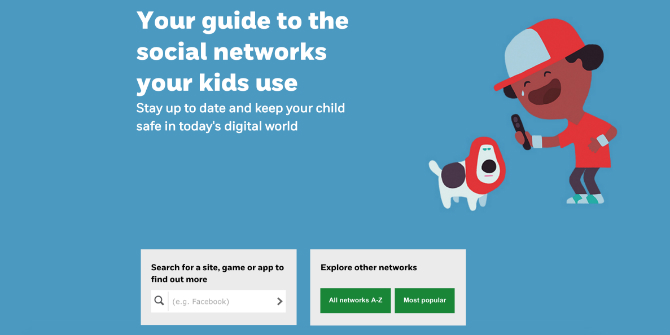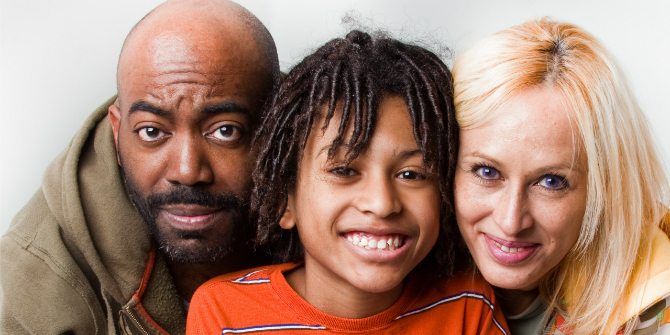Guest blogger Julia Fossi, Senior Analyst in the Child Safety Online Team at the NSPCC, explores whether the numerous stakeholders involved in child protection are doing enough to keep children safe in the online world. She introduces a new asset to help parents stay up to date with the latest sites, apps and games, Net Aware. Julia’s work focuses on social networking sites, peer-on-peer abuse online, and inappropriate and violent material.
Every child should have the right to explore the world and their identities in a safe and age-appropriate manner. At the National Society for the Prevention of Cruelty to Children (NSPCC) we know that children are increasingly turning to the online world to ask questions, explore issues, innovate, create and socialise – and whilst this can offer endless opportunities, children and young people need more guidance, support and protection in navigating the online world.
Numerous stakeholders are involved in protecting children online, working at national, European and international levels. Their work is diverse, and the processes and safeguards that they address are multifaceted in their attempt to ensure that children can navigate the online world safely.
In this blog, we would like the spotlight to be on social networking platforms, arguing that it is time that they are held more accountable for the content and services on their sites.
Social networking and Net Aware
Social networking is one of the fastest growing activities undertaken by children and young people online. Seven in ten 12- to 15-year-olds who go online have a social media profile, and most of them access their profiles from mobile phones. The NSPCC is acutely aware that alongside this exponential growth in social networking by children, parents are feeling as though they are constantly playing catch up, and feeling out of depth by what their children are doing online. The NSPCC wants to help bridge the gulf between parents and children, to help parents understand more about what their children are doing online, what they love about the sites and apps they use, and how to ensure they are kept safe.
As a result, the NSPCC has developed a tangible asset for parents so that they can stay up to date with the sites, apps and games that their children are using: Net Aware. It was imperative for us that Net Aware should have key information about safeguarding issues on each site, based on user experience, in order to give parents the confidence to facilitate balanced and informed conversations about what their children might be doing online, and to help them form their own views about the appropriateness of popular sites for their children.
In developing Net Aware, we consulted with over 2,000 children and over 500 parents to review the sites (e.g., YouTube, Instagram, Facebook, Clash of Clans and Call of Duty) that children and young people use. The results were illuminating:
- 60% of sites received the worst rating from parents when asked whether it would be easy for a child under the age of 11 to access sites with a minimum age of 13; 92% of children consulted about these sites had accessed them before they were 13;
- parents rated the privacy, reporting functions and safety features on the majority of sites poorly (57%, 60% and 85% of sites received the worst rating for each of these functions respectively), stating that these features were difficult to locate, unclear, or simply not available at all;
- 88% of sites had at least one parent reporting content that would be inappropriate for an 11-year-old to see within the first 20 minutes of registration;
- parents and children often had different perspectives on what was risky about the sites; parental concerns often centred on the content that could be found on the sites, whereas for children, it was whether strangers could contact them.
While international principles, guidance and best practice frameworks exist to encourage social spaces to enhance the safety of children and young people using their services, these results beg the question whether the sites pay them any heed? Can and should we still support and encourage digital spaces to work within a self-regulatory framework, or is it time to make digital providers more accountable for the services and content that exist on their platforms?
The NSPCC believes that all social networking sites should proactively follow current guidance (or a universal set of social networking principles), and if improvements are not forthcoming, then statutory duties and regulatory control should be implemented. Some social networking sites are making progress in ensuring that users are kept safe on their platforms, for example, by implementing Safety Advisory Boards (e.g., Facebook and Ask.fm), but progress is piecemeal and slow.
Net Aware has highlighted that from an adult user’s perspective, improvements are needed across the following five areas:
- Registration, with prominently displayed age ratings and effective age verification procedures.
- Privacy settings, with intuitive and easily adjustable privacy functions, default settings for under-16s with location tracking turned off.
- Safety information – compulsory safety tutorials at sign-up, with easily located information on how to stay safe on the site and links to external agencies.
- Reporting/blocking – prominent, clear and easy reporting functions with transparent processes and regular audits.
- Content moderation – proactive mechanisms to identify content and services on their sites in a timely manner, ensuring that adult material is put behind access controls.
In order to continue to point the spotlight at social networking platforms, we will repeatedly be asking parents and children to review the social platforms that children are using, highlighting from a user perspective why children are accessing the sites and what parents need to be aware of. We will continue to do this until we see the sea of negative ratings on Net Aware turn positive.
Only time will tell whether social networking platforms take up the challenge themselves of ensuring that children are kept safe online, or whether they need to be pushed into doing this with legislation and regulation.







